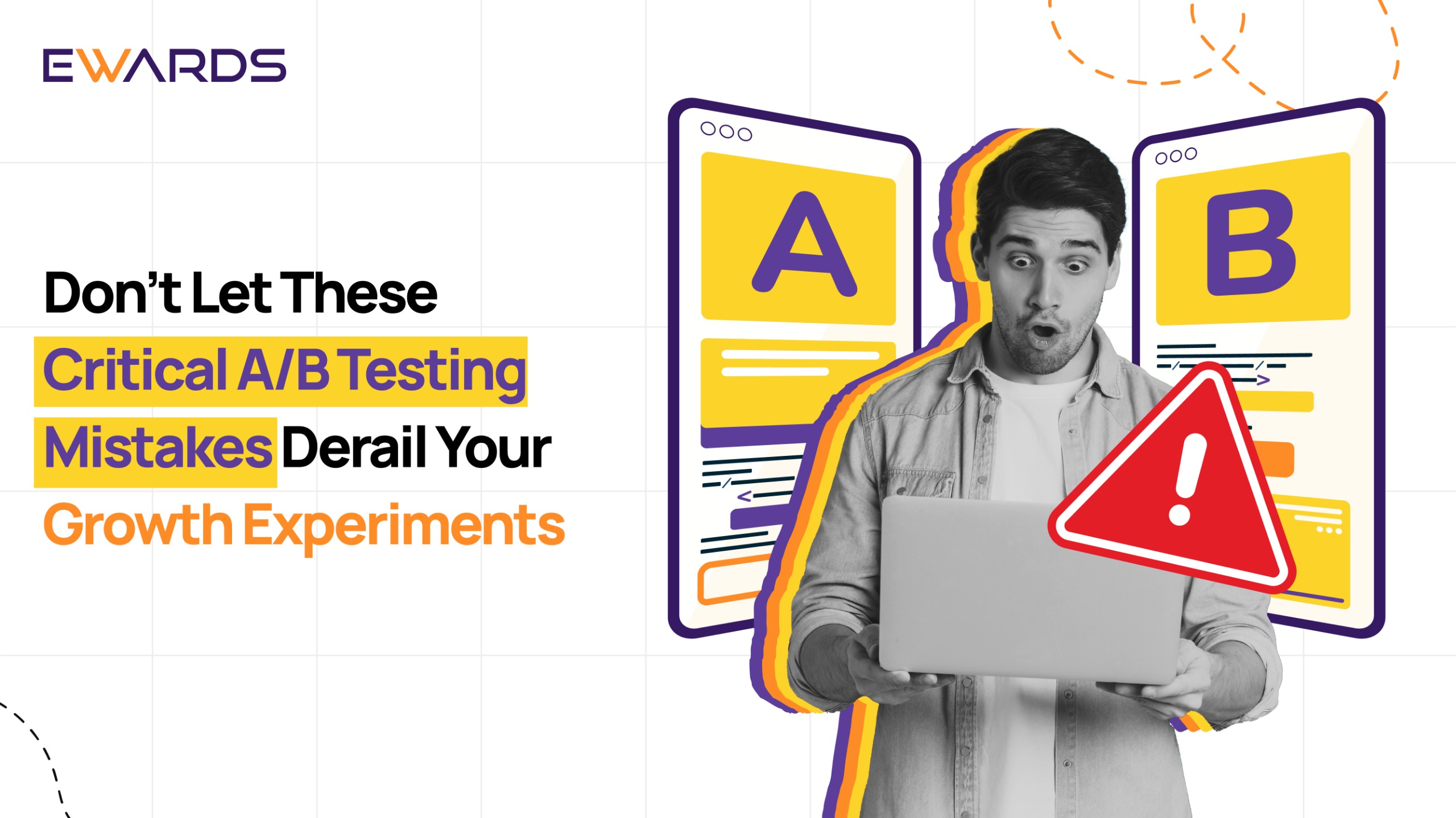
A/B Testing: A Key Tool for data-driven optimization
A/B testing, or split testing, compares two versions of a webpage, feature, or campaign to determine which performs better. This method has evolved from a simple marketing tool into a fundamental practice for data-driven product development and growth optimization. However, despite its widespread adoption, many teams unknowingly sabotage their experiments by falling into common but critical traps that render their results unreliable. Understanding and avoiding these pitfalls is essential to deriving meaningful insights and ensuring that A/B testing drives real business impact.
The Evolution of A/B Testing Beyond Landing Pages
A/B testing today goes beyond testing landing pages. Modern testing encompasses:
- User Onboarding Flows: Testing welcome screens, tutorials, and activation experiences
- Feature Adoption: Comparing approaches to introducing new features
- Pricing Page Optimization: Testing messaging, layout, and value propositions
- In-Product Experiences: Optimizing UI elements, workflows, and user journeys
- Customer Lifecycle Touchpoints: Optimizing user engagement from first visit to long-term retention
By adopting a holistic approach to testing the entire user journey, teams can identify opportunities to optimize across all stages of the customer experience.
Critical A/B Testing Mistakes and How to Avoid Them
- How impatience skews your A/B testing results
Checking results too early can lead to premature conclusions, risking false positives or false negatives due to small sample sizes or random fluctuations in user behavior. Early trends may not hold, and decisions based on incomplete data can waste resources.
Prevention:
- Avoid making decisions based on preliminary data, regardless of how compelling it may seem.
- Calculate the required sample size before starting the test.
- Set and adhere to a fixed test duration.
2. Why Running Multiple A/B Tests Increases the Risk of False Positives
Running multiple tests at once increases the chance of finding a “significant” result purely by random chance.
Correction Methods:
- Bonferroni Correction: Divide your significance level by the number of tests (e.g., 0.05/10 = 0.005 for 10 tests).
- False Discovery Rate (FDR): The Benjamini-Hochberg procedure is a less conservative approach that controls the expected proportion of false discoveries.
Only validate results once you’ve reached your target sample size and statistical significance.
Implementation:
- Document and apply the correction methods consistently.
- Prioritize tests based on potential impact.
- Plan for multiple testing corrections upfront.
3. How Novelty and Primacy Biases Distort Your A/B Testing Results
Users often exhibit temporary excitement for new experiences (novelty effect) or show a preference for familiar ones (primacy effect), leading to skewed results.
Mitigation:
- Run tests for at least two weeks to let novelty effects subside.
- Segment results by new vs. returning users to identify bias patterns.
- Track long-term performance, not just initial spikes.
4. How SUTVA Violations from User Interactions Can Contaminate Your A/B Testing Results
The Stable Unit Treatment Value Assumption (SUTVA) is violated when one user’s behavior influences others, such as in social networks or two-sided marketplaces.
Prevention:
- Use cluster randomization (group-level assignment) to minimize cross-group contamination.
- Consider staggered rollouts to monitor spillover effects.
- Track indirect effects to measure network influences on test groups.
5. Why Sample Ratio Mismatch Is a Red Flag for Your A/B Testing Results
SRM occurs when the test group sizes deviate from expected ratios, which may be caused by technical issues, bot traffic, or platform limitations.
Detection:
- Monitor traffic ratios regularly.
- Use statistical tests (e.g., chi-squared) to identify imbalances.
- Investigate and correct any imbalances immediately.
- Impact: SRM violates randomization assumptions and makes it difficult to attribute observed effects to the test treatment.
6. Why Testing Without a Clear Hypothesis Can Derail Your A/B Experiments
A weak hypothesis can lead to unfocused experiments that waste resources.
Prevention:
- Ensure your hypothesis is specific and connected to measurable business metrics.
- Define clear success criteria: What metric will improve and by how much?
- Base hypotheses on user data or research, not assumptions.
7. How Testing Multiple Variables at Once Creates Muddy Results
Testing multiple variables at once makes it hard to identify which specific changes drove improvements.
Solution:
- Prioritize A/B testing when testing one variable at a time.
- Use multivariate testing when the traffic is sufficient to test multiple combinations.
- Sequential testing is ideal for smaller user bases where results can be tested in steps.
8. Why Ending Tests Too Early Can Compromise Your A/B Testing Results
Tests are often ended too early due to external pressures or convenience, leading to incomplete or unreliable conclusions.
Prevention:
- Resist ending tests prematurely, especially when external factors (like calendar deadlines) come into play.
- Ensure statistical requirements (e.g., sample size) are met before terminating a test.
- Account for business cycles and seasonal factors that might affect user behavior.
9. How Traffic Source Inconsistencies Can Skew Your Results
Testing with unrepresentative traffic samples leads to misleading conclusions.
Solution:
- Ensure representative samples across devices, traffic sources, and user types (new vs. returning).
- Segment your analysis by these factors to ensure you understand how different groups are responding to changes.
Strategic A/B Testing Framework
Planning Phase
- User Journey Mapping: Identify optimization opportunities across the entire user journey.
- Data Analysis: Understand current performance and pain points.
- Hypothesis Formation: Develop clear, research-backed hypotheses.
- Success Metrics: Define metrics that align with business goals.
Execution Phase
- Statistical Planning: Pre-calculate sample sizes and test durations.
- Quality Assurance: Use A/A testing for implementation validation.
- Monitoring: Avoid peeking while ensuring data quality.
Analysis Phase
- Statistical Rigor: Apply multiple testing corrections and ensure that the results are statistically significant.
- Segmentation Analysis: Understand the impact of changes across different user groups.
- Practical Significance: Focus on actionable insights rather than just statistical significance.
Organizational Integration
- Cross-functional Alignment: Ensure collaboration across product, marketing, and data teams.
- Experimentation Roadmaps: Align testing efforts with broader business strategies.
- Knowledge Sharing: Build institutional capabilities around A/B testing.
Conclusion
A/B testing is an essential tool for data-driven optimization, but its power is only realized when common mistakes are avoided. By adhering to solid statistical principles, understanding psychological biases, and following best practices, teams can build robust testing programs that deliver actionable insights. A/B testing should be approached as an ongoing, disciplined practice rather than a quick fix. With careful planning and thoughtful execution, it can drive continuous improvement and provide a sustainable competitive edge in business.
